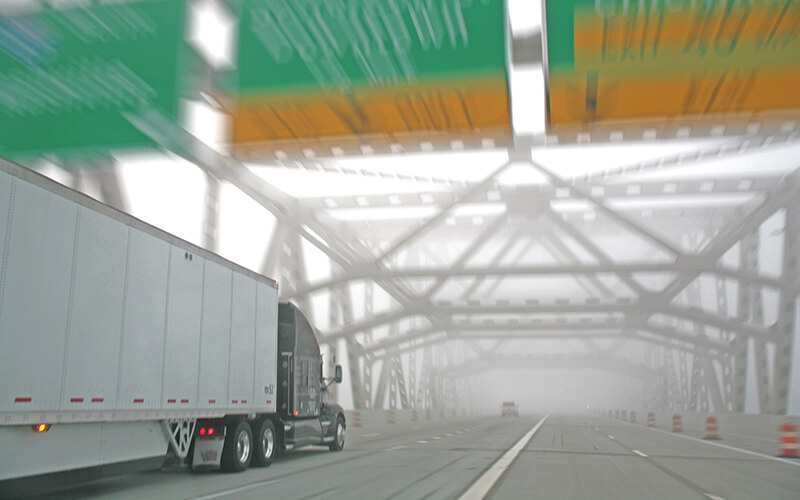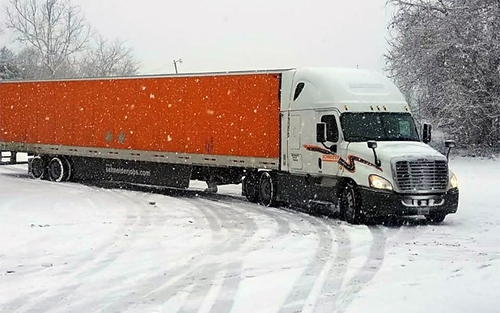Fog frequently occurs as seasons change in the United States, but it can occur any time of year, creating a dangerous hazard for truck drivers and motorists of any vehicle.
Since fog can come up suddenly and reduce visibility quickly, truck drivers need to adjust quickly to meet the conditions — whether or not other motorists do.
Most weather-related accidents are preventable, so be sure to use these safety tips on …
How to drive in fog
1. Slow down.
Even if you know the road very well, still slow down. The fog may be “covering up” a collision in front of you, which would prevent you from having adequate time to properly react.
2. Use low-beam headlights and fog lights for best visibility.
Turn on your lights even in the daytime fog and be alert for other drivers who may have forgotten to turn on their lights. It’s important to be seen.
3. Turn on your four-way flashers.
This will give vehicles approaching you from behind a quicker opportunity to see and notice your vehicle.
4. Watch out for vehicles on the side of the roadway.
Seeing taillights or headlights in front of you may not be a true indication of where the road is ahead of you. The vehicle’s driver may be disoriented by the fog, and the vehicle may not be on the road at all.
5. Use roadside highway reflectors as guides.
These reflectors can help you determine how the road ahead of you may curve.
6. Use wipers and defroster.
Maximize visibility in every safe way you can, especially if you’re also driving in rain.
7. Listen for traffic.
It may be wise to turn off the radio and listen for vehicles you may not be able to see.
8. Don't drive faster than your vision and reaction time.
Especially for truck drivers with longer stopping distances, limit your speed according to what you can see.
9. Don't change lanes or pass, unless absolutely necessary.
There could be a hill or something that would prevent you from seeing opposing headlights, so be patient with cars in front of you who may be most comfortable going slower than you are.
10. Don't stop alongside the side of the road, unless absolutely necessary.
Find a safe parking area to stop at. If you pull off the road, turn on your hazard flashers immediately.
11. Don't drive in heavy, thick fog.
If you see that visibility is dangerously low before you take off, wait it out. As Schneider’s number-one core value states: Safety First and Always — nothing we do is worth harming ourselves or others.






